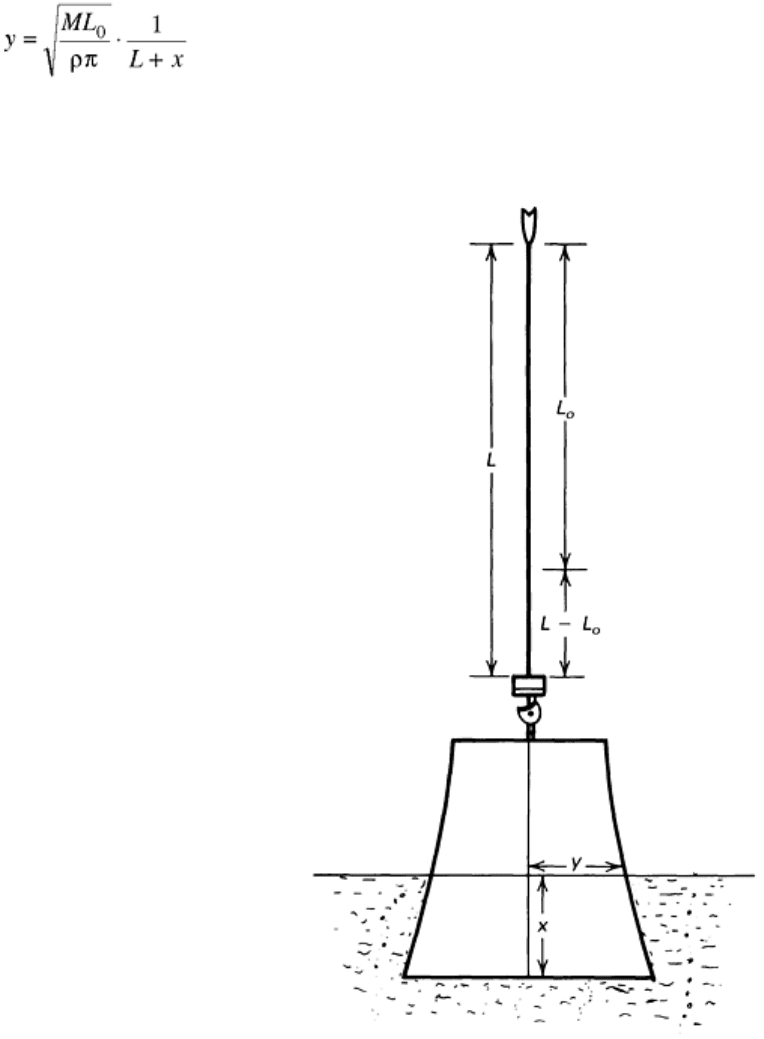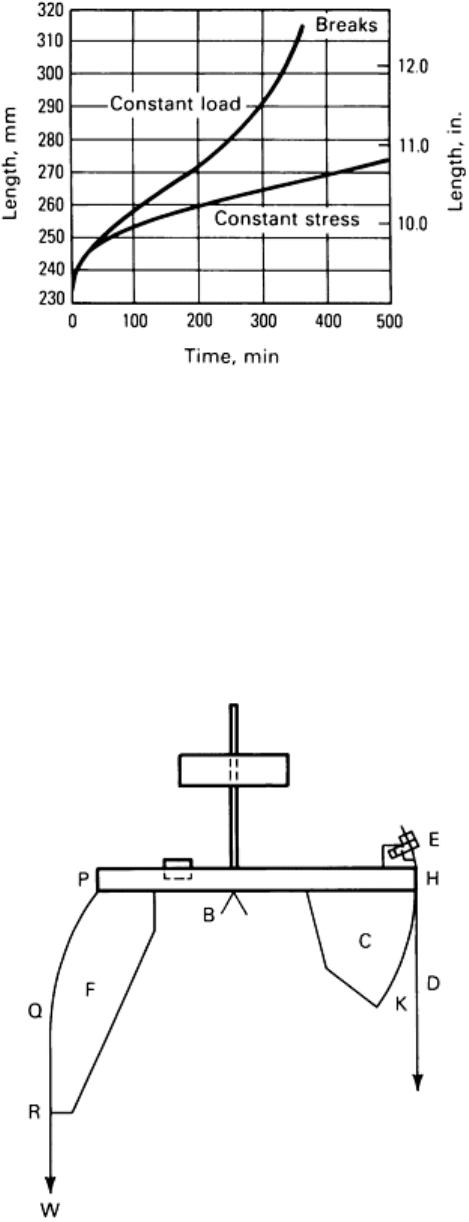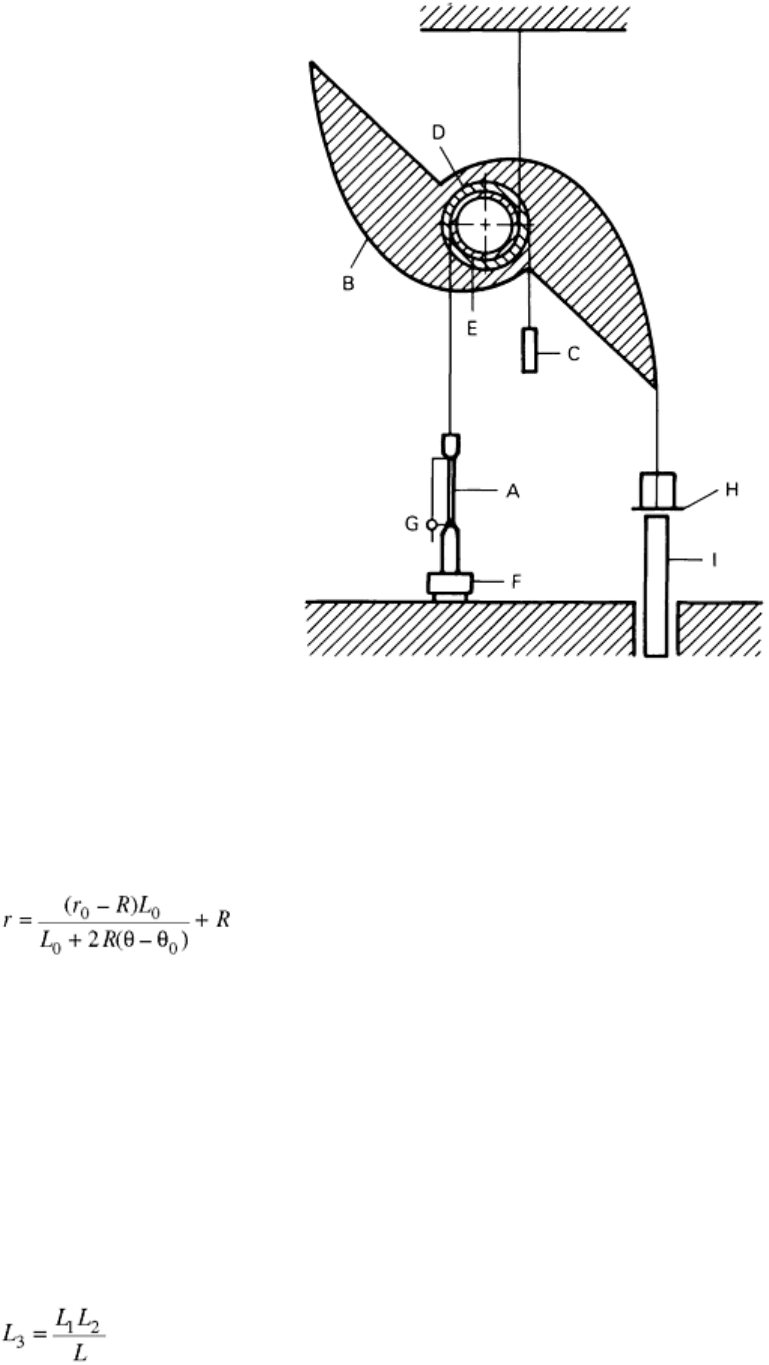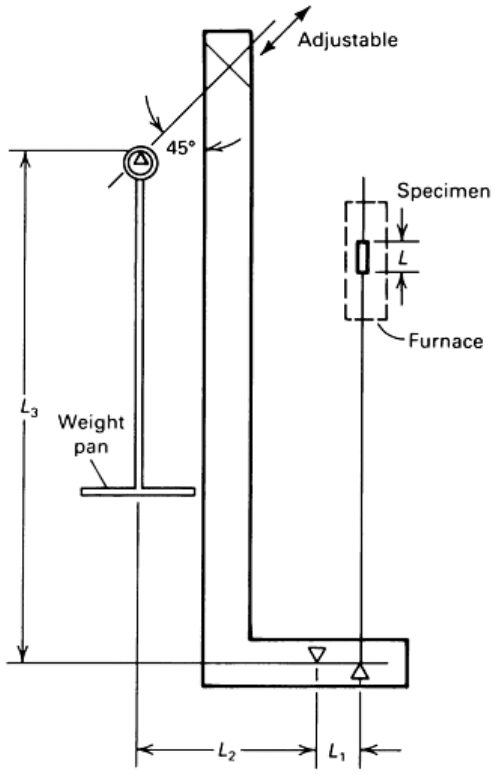ASM Metals HandBook Vol. 8 - Mechanical Testing and Evaluation
Подождите немного. Документ загружается.

Notched specimens are used principally as a qualitative alloy selection tool for comparing the suitability of
materials for components that may contain deliberate or accidental stress concentrations. The rupture life of
notched specimens is an indication of the ability of a material to deform locally without cracking under
multiaxial stresses. Because this behavior is typical of superalloys, the majority of notched-specimen testing is
performed on superalloys.
The most common practice is to use a circumferential 60° V-notch in round specimens, with a cross-sectional
area at the base of the notch one-half that of the unnotched section. However, size and shape of test specimens
should be based on requirements necessary for obtaining representative samples of the material being
investigated.
In a notch test, the material being tested most severely is the small volume at the root of the notch. Therefore,
surface effects and residual stresses can be very influential. The notch radius must be carefully machined or
ground, because it can have a pronounced effect on test results. The root radius is generally 0.13 mm (0.005 in.)
or less and should be measured using an optical comparator or other equally accurate means. Size effects,
stress-concentration factors introduced by notches, notch preparation, grain size, and hardness are all known to
affect notch-rupture life.
Notch-rupture properties can be obtained by using individual notched and unnotched specimens, or by using a
specimen with a combined notched and unnotched test section. The ratio of rupture strength of notched
specimens to that of unnotched specimens varies with notch shape and acuity, specimen size, rupture life (and
therefore stress level), testing temperature, and heat treatment and processing history.
To avoid introducing large experimental errors, notched and unnotched specimens must be machined from
adjacent sections of the same piece of material, and the gage sections must be machined to very accurate
dimensions. For the combination specimen, the diameter of the unnotched section and the diameter at the root
of the notch should be the same within ±0.025 mm (±0.001 in.).
Notch sensitivity in creep rupture is influenced by various factors, including material and test conditions. The
presence of a notch may increase life, decrease life, or have no effect. When the presence of a notch increases
life over the entire range of rupture time, the alloy is said to be notch strengthened; that is, the notched
specimen can withstand higher nominal stresses than the unnotched specimen. Conversely, when the notch-
rupture strength is consistently below the unnotched-rupture strength, the alloy is said to be notch sensitive, or
notch weakened. Many investigators have defined a notch-sensitive condition as one for which the notch
strength ratio is below unity. However, this ratio is unreliable and can vary according to class of alloy and
rupture time.
Certain alloys and test conditions show notch strengthening at high nominal stresses and notch weakening at
lower nominal stresses. Changes in heat treatment of some alloys may also alter notch sensitivity significantly.
For example, single low-temperature aging of some alloys may produce very low rupture ductilities because the
structure is not sufficiently stabilized. Consequently, exposure of such materials for prolonged rupture times
will further reduce rupture ductility because of continued precipitation of particles that enhance notch
sensitivity. On the other hand, multiple aging usually stabilizes the structure and thus reduces notch sensitivity.
Generally, notch sensitivity increases as temperature is reduced.
Notch configuration can have a profound effect on test results, particularly in notch-sensitive alloys. Most
studies on notch configuration present results in terms of the elastic stress-concentration factor. The design
criterion for the weakening effect of notches at normal and low temperatures is that of complete elasticity. The
design stress is the yield stress divided by the elastic stress-concentration factor K
t
. The value of the peak axial
(design) stress depends on the configuration of the notch.
There is no simple relationship for the effect of notches at elevated temperatures. For ductile metals, the ratio of
rupture strength of notched specimens to that of unnotched specimens usually increases to some maximum as
the stress-concentration factor is increased. For very insensitive alloys, there may be little further change.
Metals that are more notch sensitive may undergo a reduction in ratio as the notch sharpness (stress-
concentration factor) is increased beyond the maximum and may show notch weakening for even sharper
notches. Very notch-sensitive alloys may undergo little or no notch strengthening, even for very blunt notches
(low stress-concentration factor) and may undergo progressive weakening as notch sharpness increases.
Footnote
*
The section “Creep Properties” was adapted from Ref 1
with additional content by R.W. Hayes, Metals

Technology, Inc. The remaining sections of this article were adapted from “Creep, Stress-Rupture, and Stress-
Relaxation Testing” in Volume 8 of the 9th Edition Metals Handbook. The section “Constant-Stress Testing”
was updated by N.L. Carroll, Applied Test Systems Inc.
Creep and Creep-Rupture Testing*
Constant-Stress Testing
Norman L. Carroll,Applied Test Systems
Creep and stress-rupture data usually are obtained under constant-load test conditions. However, it is sometimes
desirable or necessary to obtain test data under constant-stress conditions. In this case, the applied load is
adjusted as the length of the specimen changes to maintain constant stress on the specimen.
Constant-stress testing is necessary to accurately determine differences between the temperature dependence
and the stress dependence of a material. Early quantitative work on creep of materials demonstrated that the
tensile creep of several pure metals and a selection of alloys under constant stress could best be represented by
(Ref 35):
L = L
0
(1 + βt1/3)e
Kt
where L is length of specimen after time, t, L
0
is the length immediately after loading, and β and K are material
parameters. Typical creep curves and the effect of temperature and stress on the constants β and K in the
Andrade creep equation (Ref 36) are shown in Fig. 8. The sensitivity to stress should be noted. In principle, a
constant-stress test can be much more meaningful than a constant-load test. However, constant-stress tests are
much more difficult to conduct because load reduction must be commensurate with the degree of straining.
Furthermore, in reducing the load to keep the stress constant at a neck, the stress at other points along the gage
length of the specimen is reduced. Under these conditions, the strain measured over the gage length of the
specimen is no longer a representative strain. The constant-stress test, therefore, may be more meaningful when
specimen elongation occurs uniformly rather than locally by necking (Ref 1) because the strain at the neck is
also not simply related to the applied stress. Nonetheless, constant-stress creep tests are useful engineering tests
that continue to be improved with computer-controlled test machines, as described later in this section.

Fig. 8 Creep expression constants β and K/σ plotted as a function of stress at two temperatures
Footnote
*
The section “Creep Properties” was adapted from Ref 1
with additional content by R.W. Hayes, Metals
Technology, Inc. The remaining sections of this article were adapted from “Creep, Stress-Rupture, and Stress-
Relaxation Testing” in Volume 8 of the 9th Edition Metals Handbook. The section “Constant-Stress Testing”
was updated by N.L. Carroll, Applied Test Systems Inc.
References cited in this section
1. R. Viswanathan, Damage Mechanisms and Life Assessment of High-Temperature Components, ASM
International, 1989, p 59–69
35. A. Fox, Lecture Notes, ASM Continuing Education Seminar, Creep and Stress Relaxation Testing,
March 1980
36. E.N. Da C. Andrade, On the Viscous Flow in Metals and Allied Phenomena, Proc. R. Soc. (London)
Vol 84, Series A, 1910–11, p 1
Creep and Creep-Rupture Testing*
Test Methods

Hyperbolic-Weight Constant-Stress Apparatus. An early application of constant-stress methods in creep testing
was the use of a hyperbolic weight by Andrade (Ref 36) in which load was reduced with extension of the
specimen as the weight was lowered into a liquid (Fig. 9). The required shape of the weight is given by an
equation of a hyperbola:
(Eq 9)
where M is the mass of the load, L
0
is the initial length of the wire, and ρ is the density of the liquid, usually
water. The coordinates of the hyperbola, x and y, are shown in Fig. 9. After selecting a particular M and L
0
, the
exact size of the weight is given. A weight, once constructed, is exact for one particular initial load, but with
reasonable approximation, the same weight can be used over a limited range of loads.
Fig. 9 Hyperbolic-weight constant-stress apparatus. Source: Ref 36
Andrade's tests on lead wire showed a significant difference between results on constant-load and constant-
stress tests for the same initial length and the same initial load (Fig. 10). Under constant stress, the rate per unit
length, once past the initial effect, is constant up to breaking.

Fig. 10 Results of tests on lead wire under constant-load and constant-stress conditions. Source: Ref 36
Balanced Beam with Cams. A more convenient and useful method uses a balanced beam with shaped cams
(Ref 37). A beam (PH in Fig. 11) is supported by a knife edge B and carries two plates, F and C, one at each
end. Plate C has a groove along its outer edge HK; the profile HK is an arc of a circle with center B. D is a thin
steel wire resting in the groove that is fixed to the adjusting screw, E. The lower end of D is attached to the
upper end of the wire to be stretched. F is the second plate, in the groove of which lies a thin steel wire
supporting a weight W. The profile of the bottom of the groove PQR is made such that the moment of the
weight W about the axis through B is inversely proportional to the length of the wire undergoing stretch, which
(assuming that any change in density of the metal that may occur during stretch is negligible) will make the
stretching force proportional to the cross section of the wire.
Fig. 11 Balanced beam with cams. See text for explanation of symbols. Source: Ref 37
A compact cam-lever apparatus for application of either constant stress or constant load in tension for large
uniform deformations has been developed (Ref 38). Systems of this type have been used for constant-stress
testing at loads up to 45 kN (10,000 lbf).
The profile of the constant-stress cam lever is similar to that of the balanced beam with cams (Ref 37), except
that exact parametric equations for the cam profile have been determined. The load to the specimen is applied
through a circular disk of radius R (Fig. 12). The initial mechanical advantage is r
0
/R, but the ratio is reduced as
the specimen elongates.

Fig. 12 Constant-stress cam-lever apparatus. Source: Ref 38
To maintain constant stress, the load P on the specimen must be reduced as the specimen elongates to
compensate for the reduction in area A. Thus, the instantaneous stress P/A must remain constant. By assuming
constant specimen volume and uniform strain, LA (where L is the specimen length) must remain constant.
Therefore, it follows that PL also remains constant. In Fig. 12, under equilibrium conditions, P = Wr/R, where
W is the applied weight and r is the instantaneous moment arm of the applied weight. Thus, to maintain a
constant stress, the following condition must be satisfied:
rL = constant - r
0
L
0
(Eq 10)
where L
0
is the initial specimen length and r
0
is the initial value of r.
As the length of the specimen increases, the arc of contact on the small wheel increases by an equivalent
amount. Thus, the instantaneous specimen length may be written as:
L = L
0
+ (θ - θ
0
)R
(Eq 11)
where θ
0
is the angle for the initial positioning of the constant-stress cam. Eliminating L from Eq 10 and
11leads to:
(Eq 12)
This is the equation of the profile of a constant-stress cam. To design an actual cam profile, it is desirable to
transform Eq 12 into a fixed Cartesian coordinate system (x, y). These design considerations are discussed in
Ref 37 and 38.
To provide balance and proper control of loading on the specimen, a balancing cam is added to the loading
cam. As shown in Fig. 13, a circular disk or constant-load wheel also may be added to the cam for the purpose
of performing constant-load testing. The load can be transmitted by a number of methods; steel bands or roller
chain are used most frequently. The shaft of the cam assembly usually is supported by pillow block bearings.
Another method of support is the use of hardened and ground knife edges and V-blocks (Fig. 14), although this
method results in reduced cam rotation and specimen elongation.

Fig. 13 Constant-stress testing system with balancing cam and constant-load wheel
Fig. 14 Constant-stress testing system using V-block and knife-edge support
Typical systems of this type include a counterbalance cam, a pillow block bearing support, and a three-zone
furnace for elevated temperature testing. A motorized automatic weight elevator with a platform usually
provides gradual load application, reduces labor in handling weights, and minimizes shock upon specimen
failure. The cams for these systems are programmed and machined on a computer numeric control (CNC)
milling machine to provide optimum accuracy and minimum cost.
A constant-stress apparatus for use with low forces has been developed to eliminate frictional effects of hinges
or bearings (Ref 39). Reference 40 describes a method of cam assembly support by means of steel tapes.
Modifications of this method were designed to achieve the accurate maintenance of constant stress when forces
as low as 0.1 N (0.022 lbf) are involved (Fig. 15).

Fig. 15 Constant-stress testing system for use with low forces. A, specimen; B, double cam; C,
countermass; D, pulley for countermass; E, hollow cylinder from which specimen is suspended; F, force
cell; G, tape displacement gage; H, loaded mass pan; I, hydraulic ram
To balance the mass of the cam about the point of suspension and thereby ensure that the only force on the
specimen is the applied force due to the mass M, the countermass C is necessary. With the modified suspension,
the cam profile equation becomes:
(Eq 13)
For actually determining the cam profile, Eq 13 usually is transformed into two profile equations that express
the Cartesian coordinates x and y in terms of a single parameter.
In the absence of frictional forces, the lower limit on the applied force P is determined by the sensitivity with
which the suspension system can be balanced. For the present apparatus, the lower limit was 0.1 N (0.022 lbf),
which corresponds to 5.0 kPa (0.72 psi) if the specimen diameter is 5 mm (0.2 in.). Thus, the apparatus is
suitable for use at small stresses, such as may be encountered in studies of plastic flow at temperatures close to
the melting point. The system demonstrated accuracy within ±0.50%.
High-Temperature Constant-Stress Compression Creep Apparatus. A constant-stress apparatus has been
developed for high-temperature compression testing of ceramic materials in controlled atmospheres (Ref 41).
The creep frame is based on the fundamental concepts developed in Ref 42 for the application of constant
compressive stress loading using the Andrade fulcrum principle via a lever arm mechanism from a weight pan
loaded system. The following equation ensures maintenance of constant stress:
(Eq 14)
where L
1
, L
2
, and L
3
are the distances between the various knife edges (Fig. 16 and 17) and L is the sample
length.

Fig. 16 Knife-edge configuration for constant-stress compression testing. Source: Ref 41

Fig. 17 Alternate knife-edge construction providing a greater range of sample lengths. Source: Ref 41
Two knife edges provide the fulcrum for the lever arm, another supports the weight pan, and a fourth applies
the force to the lower sample push rod. When the load pan support columns are vertical, the frame acts as a
simple fulcrum to apply a force on the lower push rod that is greater than the force on the weight pan by a
factor of L
2
/L
1
. When the sample deforms, the frame tilts backward and the columns are no longer vertical.
This movement, which is proportional to the preset L
3
and the amount of deformation, increases the force
applied to the push rod and also to the sample. The increase in force compensates for the increase in area of the
sample as it is compressed, thus maintaining a constant stress. Shorter samples require a greater L
3
because the
area of the sample becomes greater for the same amount of deformation than for a sample of greater height.
Sample area is not important in making L
3
calculations because changes in area for a given amount of creep are
of the same proportion for samples having either a large or a small area if both are of the same height. The
system described also allows L
3
to be adjusted.
By increasing or decreasing the range of L
3
, the range of sample lengths can be changed. This is done by using
longer or shorter weight pan support columns or by using an adjusting system that simultaneously changes L
3
and L
2
by moving the weight pan knife edge, as shown in Fig. 17. Two bars with weights are used to balance
the frame.
The unit maintains constant stress to within 1%, as long as the total strain does not exceed 10% and the test is
initiated with the weight pan columns in a vertical position. However, if an approximation of the total strain
during the run can be predicted and if the unit is set such that it passes through the vertical position when
approximately one-half of the total strain has occurred, the stress can be held to within 0.5% up to a total strain
of 10%.
Footnote
